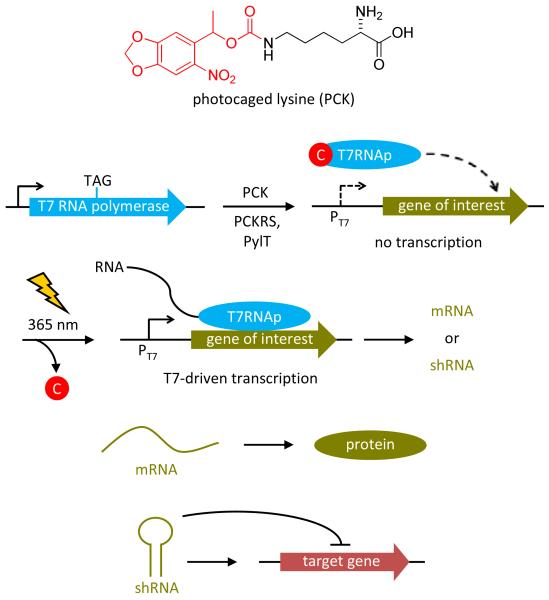Figure 1. The light-activated T7RNAp is expressed in mammalian cells through site-specific incorporation of a photocaged lysine (PCK) into its active site in response to an amber stop codon (TAG) via an engineered tRNA synthetase (PCKRS) that misacylates an amber-suppressor tRNA (PylT) with PCK.
The caged T7RNAp is completely inactive until irradiation with 365 nm UV light induces decaging and activation of T7-driven transcription. Depending on the function of the transcribed RNA, light-induced protein expression from mRNA or light-induced gene silencing via RNA interference from shRNA is achieved.

